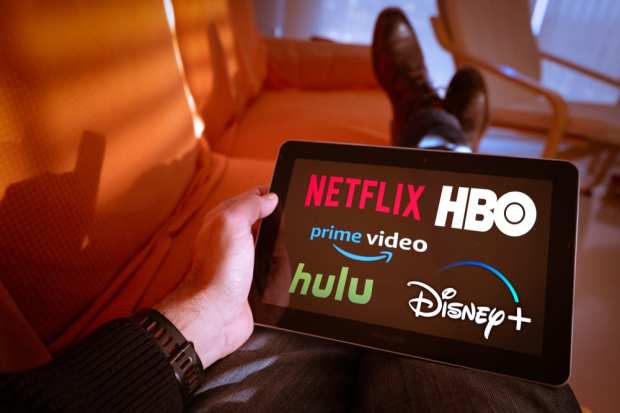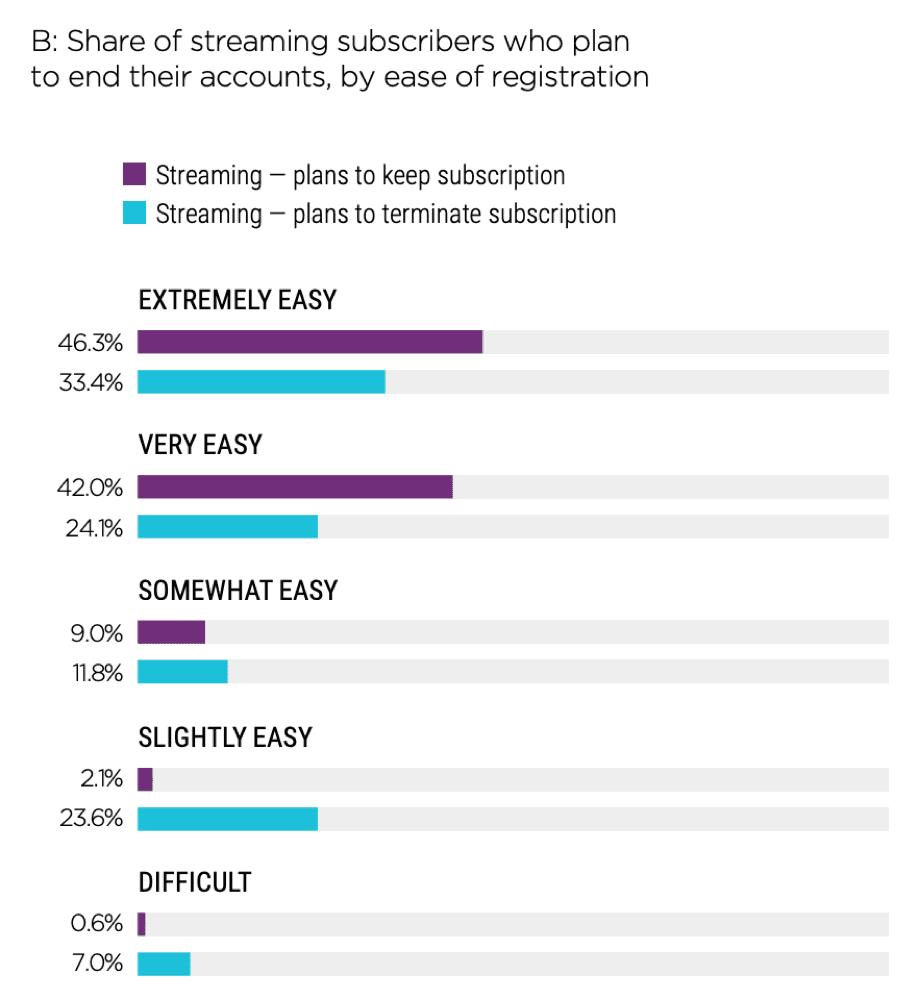Are Consumers Maxed Out On Subscription Commerce?

There is only so much time in a day to watch programming and only so much monthly budget to devote to food delivery services. Has the subscription commerce market reached saturation?
The real question may be which of the many current and planned subscription services will come out on top.
Last week, Netflix released earnings that were fairly positive. But with Disney+ and Apple TV+ launching soon, the competition for subscribers is heating up. Netflix is currently the king of subscription streaming services, with nearly 150 million subscribers. Some of its top-rated shows are leaving the service in the coming years, however, and forthcoming services are poised to steal share.
Increased competition is a factor contributing to the tightening market. PYMNTS’ Subscription Commerce Conversion Index found that fewer new providers entered and left the market during Q2 2019, and players in the space have largely not been improving their performance. This is particularly prevalent in the streaming industry, where Netflix’s first net subscriber loss in the U.S. caused the company’s stock price to plummet.
In that study, over-the-top (OTT)/SVOD, which includes providers like Netflix, Hulu and Amazon, stood out as a well-performing segment, posting an average score of 67.8 and the highest score for an individual merchant at 91.4.
The latest Subscription Commerce Tracker explores new streaming subscription offerings that could give Netflix a run for its money, and illustrates what subscription commerce companies can do to retain customers.
The Retention Problem
Churn is a known issue, especially for streaming services. Nearly one in 10 (7.3 percent) of streaming services subscribers plan to end their subscriptions within the next year, according to the Subscription Commerce Conversion Index.
Per a recent study, B2B subscription companies are most confident in the way they prioritize retention, with only 30 percent of them believing they could be doing more. Nearly half (49 percent) of B2C subscription companies like Netflix or Blue Apron believe there is room for improvement.
The highest priority among B2C subscription companies (56 percent) is improving customer satisfaction through better experience and support. Just 9 percent are focused on saving customers from canceling, which could be viewed as a last-resort tactic.
Specifically, the leading tactics used by B2C subscription companies to reduce customer churn are offering bundles or special deals to at-risk customers (58 percent), preemptively engaging at-risk customers with discounted pricing (41 percent) and offering the ability for customers to pause or suspend their subscriptions (24 percent).
First Impressions Matter
Over one-third (34 percent) of B2C subscription companies think faster response times and better-trained customer support will have the greatest impact on customer retention.
Though just 11 percent of B2C subscription companies cited onboarding new customers effectively as a high priority, B2B subscription company Salesforce and other SaaS firms have an opposite approach. Nearly one-third (32 percent) are prioritizing onboarding and the sign-up experience.
According to PYMNTS’ Subscription Commerce Conversion Index, the sign-up and onboarding process has more bearing on customer satisfaction and retention than one might think.
The research shows that users’ negative experiences with how streaming platforms operate correlate with greater likelihoods of account cancellation – and this starts with registration. Nearly half (42.4 percent) of those planning to end their streaming subscriptions consider their onboarding experiences to be “somewhat easy” at best, compared to only 11.7 percent of those keeping their subscriptions. In fact, the latter were much more likely to characterize their registration experiences as “very easy” or “extremely easy,” with 88.3 percent having this view.
 User experience matters. A major friction point in using streaming platforms concerns the retention of payment information. Subscribers who plan to end their subscriptions report having to change their payment credentials more frequently, such as when a credit card expires, and 21.1 percent of those planning to end their streaming subscriptions report having to change their credentials weekly. This compares to just 1.8 percent of those planning to keep their accounts.
User experience matters. A major friction point in using streaming platforms concerns the retention of payment information. Subscribers who plan to end their subscriptions report having to change their payment credentials more frequently, such as when a credit card expires, and 21.1 percent of those planning to end their streaming subscriptions report having to change their credentials weekly. This compares to just 1.8 percent of those planning to keep their accounts.
The subscription economy is maturing, but the average subscription-based merchant is not improving its performance in key measures, including the time it takes to onboard new subscribers and minimizing technical glitches around payment.
